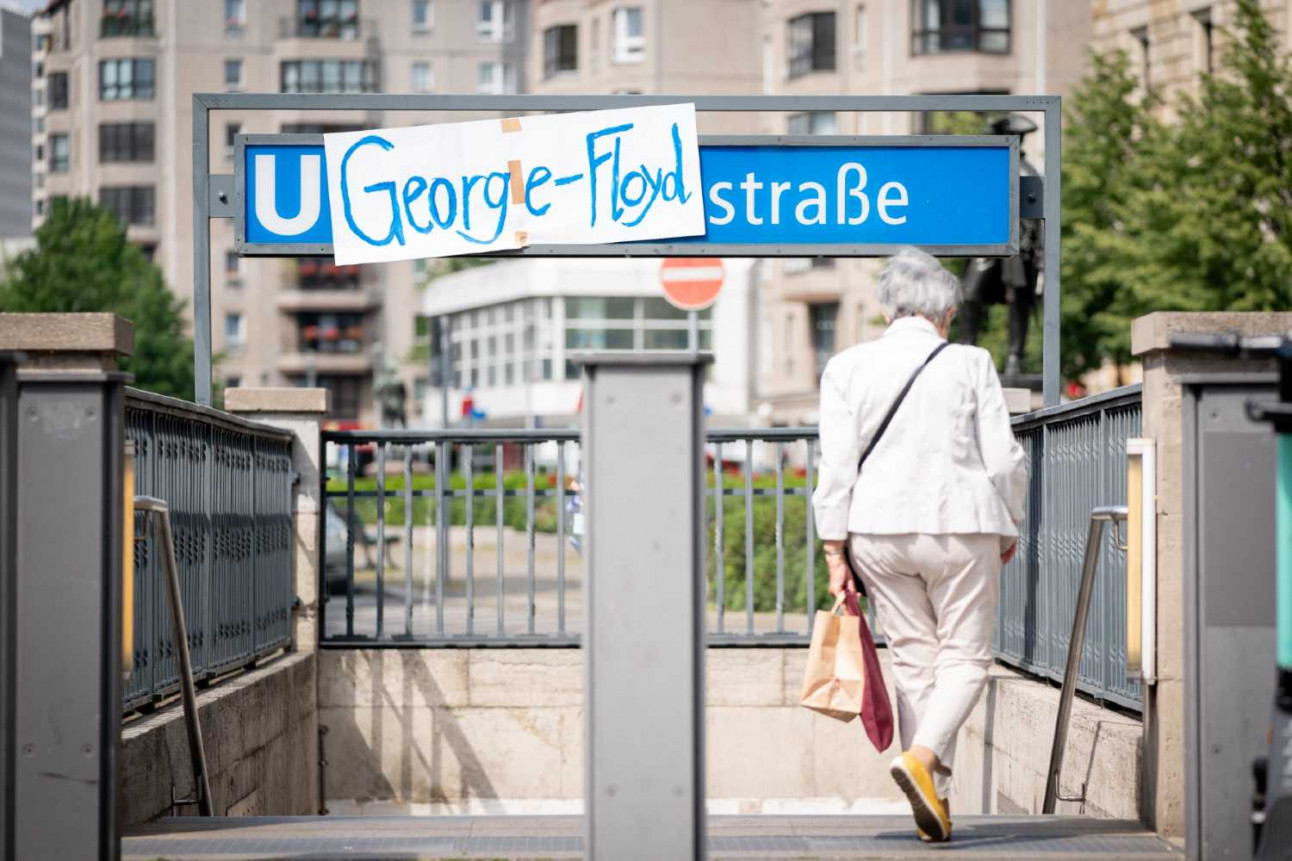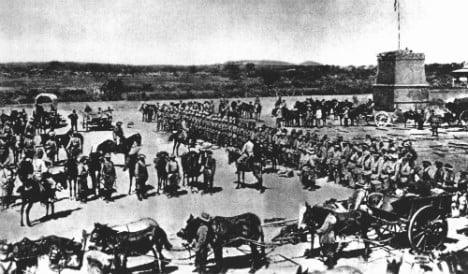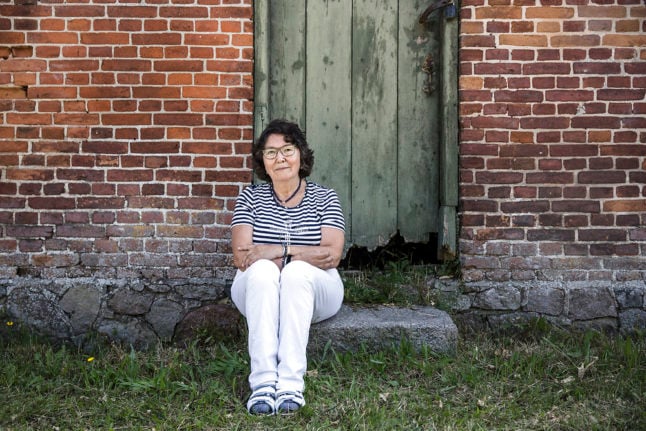A curious sign greets visitors to the colonial-era exhibits in the German Historical Museum: the collection is outdated and “needs to be thoroughly revised”.
The reason for the rethinking is not explained, and a spokesperson for the museum said plans for the future exhibit are still rudimentary.
The reassessment started even before the protests. Last year, the museum returned the pillar of Cape Cross, a stone crucifix placed by Portuguese explorers in 1486, taken from Namibia to Germany in 1893 by a German seafarer.
READ ALSO: Germany confronts colonial past through return of ancient cross to Namibia
Several attacks by right-wing extremists against migrants in Germany, such as the shooting that killed nine people in two shisha bars in Hanau in February 2020, were a wake-up call for many Germans about the danger of racism.
Earlier this month the Berlin transport company (BVG) said it would rename the Mohrenstraße U-Bahn station because of the name’s racist connotation (Mohren, or Moors, refers to the Black slaves brought to Berlin in the 18th century).
READ ALSO: 'Racist' Berlin underground station to be renamed

A sign for George Floyd replaces the Mohren in 'Mohrenstraße'. Photo: DPA
Germany’s role in European colonialism is often forgotten. But between 1884 and 1914, it was a considerable force in Africa. Its possessions included modern-day Togo, Cameroon, Tanzania and Namibia.
Like their European rivals, German troops seized land, forced local populations into slave labour, and did not hesitate to crush those who resisted them.
In 1904, the Herero and Nama people of Namibia rebelled. The German authorities’ response was devastating.
By 1908, they had killed up to 120,000 people—in combat, by poisoning the village wells and by forcing people into the desert where they died of dehydration. If they tried to return, they were usually sent to concentration camps where they died of disease or exhaustion.
READ ALSO: Germany announces apology plans for colonisation in Namibia
This massacre is widely seen as a genocide. Their descendants are still awaiting a formal apology from the German government. But acknowledging responsibility for the crimes comes with the risk of paying reparations.
Namibia has received millions of dollars from Germany, but the money is carefully labelled “development aid”.
'Not meant to be in a museum'
Around 500,000 items taken by German colonisers are held in Berlin’s state museums, including skulls and ritual objects. These are a mix of war booty, “gifts” (often involuntary) or traded goods (often on unfair terms). They were used to convince the German population of the legitimacy of the country’s colonial conquests.
The current Humboldt Forum museum project, which will be built in the reconstructed Prussian-era Berlin Palace in the city centre, plans to exhibit many of these pieces.
In response, ‘’No Humboldt21’’, a pressure group that opposes the project, says the objects must be returned to their country of origin.
“Many of these objects are not meant to be in a museum in the first place. And if they are, then maybe it is time for Germany to help build those museums in African countries – as a thank you, and sorry, for having kept their objects for so long,” says Christian Kopp, the group’s spokesperson.
The Forum administration argues that the museum will raise awareness about colonialism, by bringing the objects into the city centre; it “focuses on intercultural dialogue, and provides a range of perspectives on globally significant issues,” the Forum’s website declares.
READ ALSO: The controversial German street names in need of a new identity
Kopp argues that German society has not merely forgotten its colonial past, but repressed it.
‘’People talk about colonial amnesia. That term is misleading, because it sounds like it is pathological, as if it were an unstoppable sickness. The reality is that there are decision-makers who write the school books, are in charge of education policy, and simply decide that this is not important enough to learn about.’’
As one German student puts it, “we spend a billion hours on the Third Reich and Nazism, and maybe a few on colonialism – and even then it is mainly about how Columbus explored the world.”
To those who have witnessed Germany’s attempt to atone for the Holocaust and the Second World War, the reluctance to come to terms with the colonial past seems out of character.
Coming to terms with the past

German troops in Namibia in 1904. Photo: DPA
Susan Neiman, an American philosopher, believes that the West reduced Nazi ideology to anti-Semitism, forgetting that racial purity laws were also directed against Black people and others.
She claims that post-war German governments put huge effort into combatting hostility towards Jews, but allowed hostility towards other minorities to fester.
Even so, Mrs Neiman believes Germany has one powerful advantage: it knows how to deal with the past. Instead of seeing themselves as victims or heroes of the Second World War, Germans learned to “turn from focusing on their own wounds to focusing on the wounds they’ve caused.”
The German idea of Vergangenheitaufarbeitung (working through the past), she explains, suggests that “if you bury the shameful parts of your past, you will never have a healthy future.”
READ ALSO: Berlin to change street names which honour brutal colonial past
Amidst the colonial objects in the German Historical Museum, two statues stand out. They are clay and wood figures of colonialists made by local artists. Medals of honour, gun, helmet and neat moustache have been etched with care. Why were they made?
Perhaps as commissions from passing German soldiers, or as rebellious caricatures. For once, though, we see an African perspective of a European man.
The clay statue appears on the museum’s posters around the city. This attempt to see colonialism through the eyes of the victim, rather than the perpetrator, may be a sign that Germany is beginning to look at its colonial past differently.



 Please whitelist us to continue reading.
Please whitelist us to continue reading.
Member comments